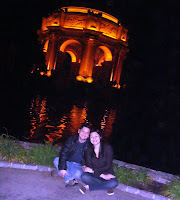De Young Museum at Golden Gate Park

The de Young Museum, also known as the M. H. de Young Memorial Museum, is a fine arts museum located in San Francisco's Golden Gate Park. It is named for early San Francisco newspaperman M. H. de Young. The museum opened in 1895 as an outgrowth of the California Midwinter International Exposition of 1894 (a fair modeled on the Chicago World's Columbian Exposition of the previous year). It was housed in an Egyptian style structure which had been the Fine Arts Building at the fair. The building was badly damaged in the earthquake of 1906, closing the building for a year and a half for repairs. Before long, the museum's steady development called for a new space to better serve its growing audiences. Michael de Young responded by planning the building that would serve as the core of the de Young Museum facility through the 20th century. Louis Christian Mullgardt, the coordinator for architecture for the 1915 Panama-Pacific International Exposition, designed the Spanish-Plate...

